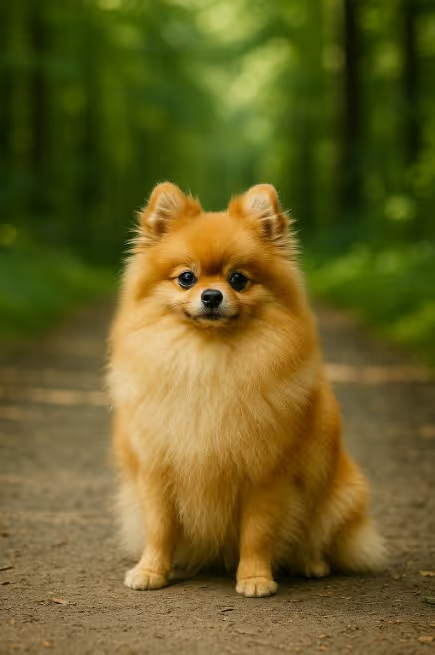The Pomeranian (Pom) is a spirited, ultra-fluffy toy spitz with a big-dog attitude in a 3–7 lb package. Alert, affectionate, and clever, Poms thrive on attention, tricks, and short daily adventures. They suit city and condo life well—if you manage barking and grooming. Common searches like “Do Pomeranians shed?” and “Are Pomeranians good apartment dogs?” are answered here with clear care guidance.

Descended from Arctic spitz-type sled dogs, the breed was miniaturized in the Pomerania region (today parts of Poland and Germany). Popularized in the late 1800s—especially by Queen Victoria—Pomeranians became fashionable companion dogs, refined to today’s petite size while retaining their alert watchdog nature and thick double coat.
A tiny, fox-faced spitz with a profuse stand-off double coat and high-set plume tail.
That glam coat needs routine care to stay healthy and mat-free.
Small body, moderate needs—quality play and brisk potters do the job.
Bright, eager, and a bit sassy—keep it fun and positive.
Fuel their spark without adding extra fluff.
Generally long-lived but toy-size issues require vigilance.
Choose ethical sources; avoid “teacup” marketing (not a recognized size, often health-risky).
Are Pomeranians good apartment dogs?
Yes—excellent, with daily exercise, enrichment, and bark training.
Do Pomeranians shed a lot?
Moderately year-round with seasonal heavy sheds; routine brushing helps.
Are Pomeranians hypoallergenic?
No. They’re not hypoallergenic despite low-to-moderate shedding control with grooming.
How do I stop Pomeranian barking?
Teach a cue for “quiet,” reward calm, provide daily exercise/brain work, and manage windows/door triggers.
What’s a teacup Pomeranian?
A marketing term—not a recognized size. Very tiny dogs have higher health risks; choose standard-size, health-tested pups.
How much exercise does a Pomeranian need?
About 30–45 minutes daily plus training games.
How often should a Pomeranian be groomed?
Brush 2–3×/week (daily in shed), bathe every 4–8 weeks, tidy every 6–8 weeks.
Are Pomeranians good with kids and other pets?
Yes with supervision and early socialization; they’re small and can be injured by rough play.